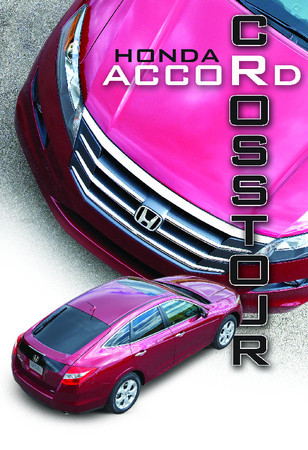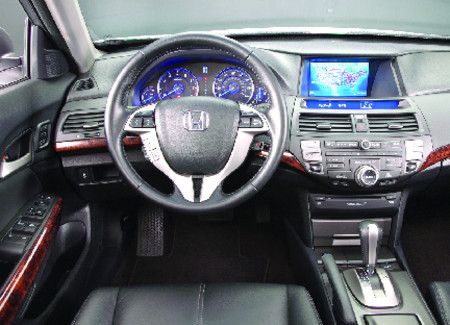Honda hatches new car
You can't please all the people all of the time as Honda discovered after releasing prelaunch photos of its new Accord Crosstour.
The entire Internet blogosphere seemed to erupt with armchair automotive stylists waxing nonpoetic and generally not-fit-to-print criticisms concerning the Crosstour's looks.
Simply put, they're wrong.
While no raving beauty (few cars actually qualify for that lofty description), the Crosstour should easily win plenty of popularity awards. It's altogether pleasing to the eye in a rugged sort of way, provides plenty of space for people and especially their belongings, offers decent performance and can handle most weather-influenced road conditions when the optional four-wheel-drive system has been added to the mix.
The decision-making process that ultimately led Honda to create a full-size multipurpose hatchback seems quite logical in light of recent news that the automaker's upscale Acura division will bring a wagon version of its TSX sedan (not to be confused with the new ZDX) to North America next fall. With that design base covered, Honda's body shapers were free to sculpt something other than a traditional wagon variant as they had done with previous Accords (and the approach that Toyota has taken with its Camry-based Venza).
The hatch on the Crosstour is its most prominent component and the portal that separates it from the rank-and-file Accord sedans. Additionally, the Crosstour features a more prominent snout and offers more ground clearance.
Raising the rear opening reveals a richly carpeted cargo hold that's nearly double the size of the sedan's. However, a flip of the twin levers positioned next to the inside fender wells releases the split-folding rear seat to significantly increase stowage room. However, don't count on as much available space as the Toyota Venza, Nissan Murano and other wagon-type vehicles.
One neat feature is the cover that conceals a briefcase-sized rear storage spot. Flip the carpeted side over and you have a hard plastic shell for placing muddy boots, wet clothing, towels, etc.
Honda is positioning the Crosstour at the premium end of the Accord scale and as such only offers the sedan's optional -- and very lively -- 271-horsepower 3.5-liter V-6 connected to a five-speed automatic transmission that drives the front wheels. The V-6 has a deactivation program that shuts down two or three cylinders, depending on the engine load, to reduce fuel consumption under light load and level-cruise situations. Interestingly, the spark plugs continue to fire in the inactive cylinders to maintain plug temperatures and reduce the chances of fouling once the cylinders have been reactivated.
Honda's "Real Time" four-wheel-drive system, a $1,450 option on the Crosstour EX-L, works much like the version found on the brand's CR-V entry ute in that it only redirects power to the rear wheels when front-wheel slip is detected (that is, when the front wheels begin to turn more quickly than the rear wheels). Four-wheel-drive increases the curb weight by a modest 185 pounds while reducing city/highway mpg fuel economy to 17/25 from 18/27 on front-wheel-drive versions.
Along with the expected power-operated components, the base Crosstour EX includes dual-zone climate control, power moonroof, tilt and telescopic steering column, power-adjustable front seats and a 300-watt audio system with speed-sensitive volume control.
Step up to the EX-L and you'll get leather-covered seats (heated in front), auto-dimming rearview mirror, Bluetooth hands-free communications link and 18-inch wheels (17s are on the EX).
Ordering the optional navigation system, one of the few extras you can add to the EX-L, also gets you redundant controls on the steering wheel.
Accord Crosstour pricing begins at around $30,400, including destination, and maxes out at just a shade below $37,000. That makes it nearly $3,000 more expensive than a comparably equipped Accord sedan, but easily worth it for anyone needing a more versatile and (doubting bloggers take note) visually appealing package.
















